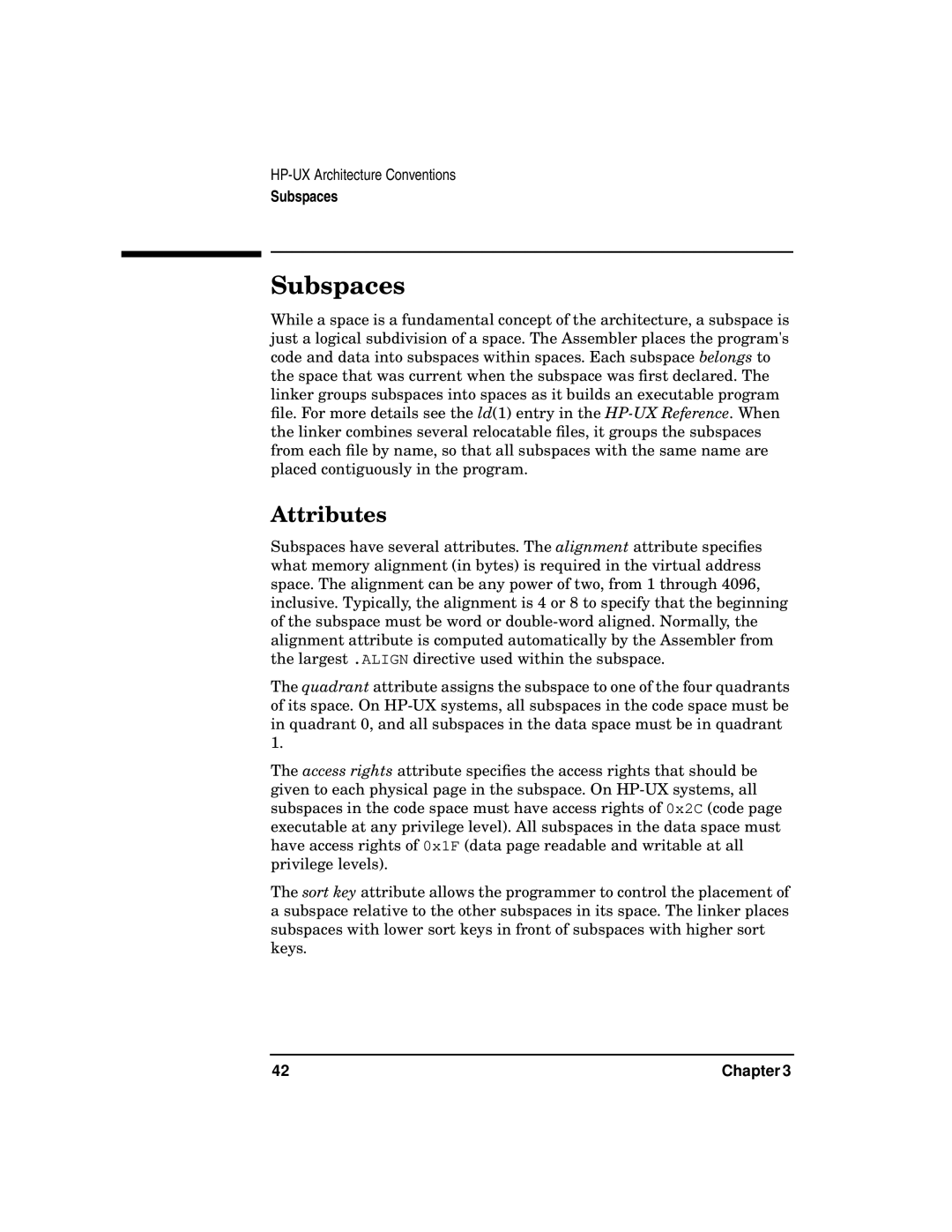
Subspaces
Subspaces
While a space is a fundamental concept of the architecture, a subspace is just a logical subdivision of a space. The Assembler places the program's code and data into subspaces within spaces. Each subspace belongs to the space that was current when the subspace was first declared. The linker groups subspaces into spaces as it builds an executable program file. For more details see the ld(1) entry in the
Attributes
Subspaces have several attributes. The alignment attribute specifies what memory alignment (in bytes) is required in the virtual address space. The alignment can be any power of two, from 1 through 4096, inclusive. Typically, the alignment is 4 or 8 to specify that the beginning of the subspace must be word or
The quadrant attribute assigns the subspace to one of the four quadrants of its space. On
The access rights attribute specifies the access rights that should be given to each physical page in the subspace. On
The sort key attribute allows the programmer to control the placement of a subspace relative to the other subspaces in its space. The linker places subspaces with lower sort keys in front of subspaces with higher sort keys.
42 | Chapter 3 |
